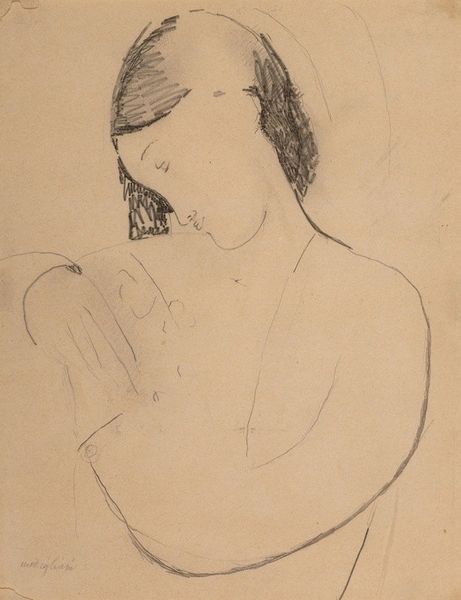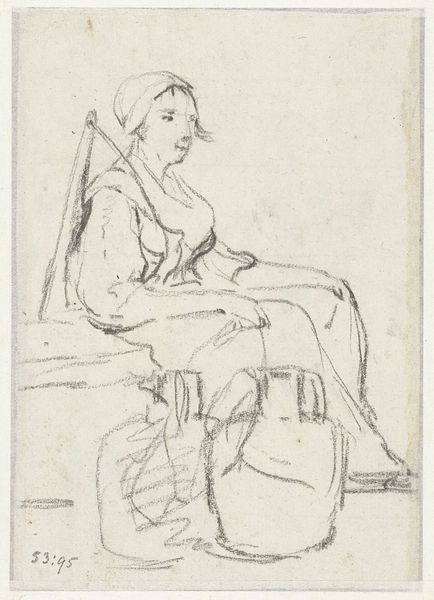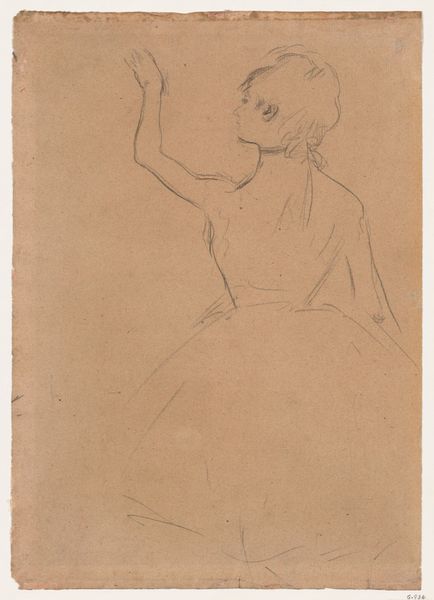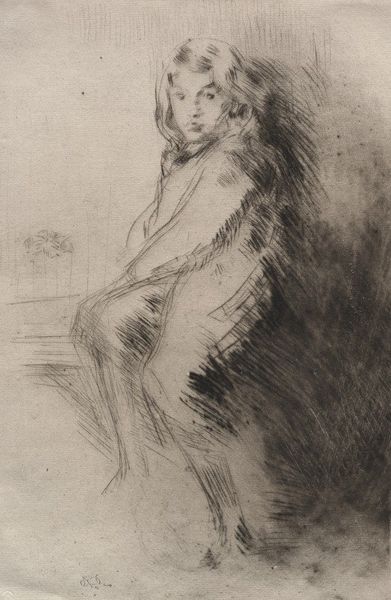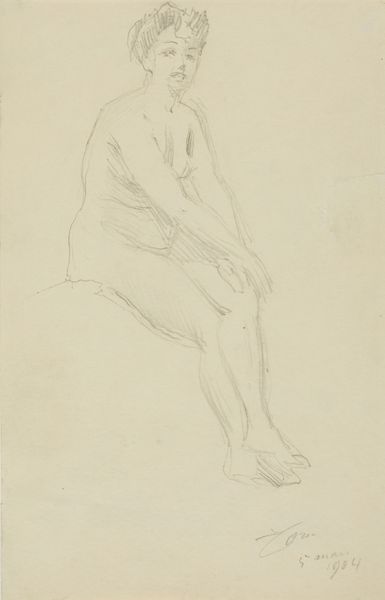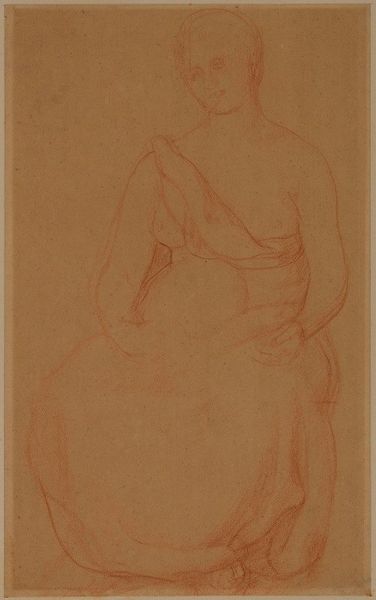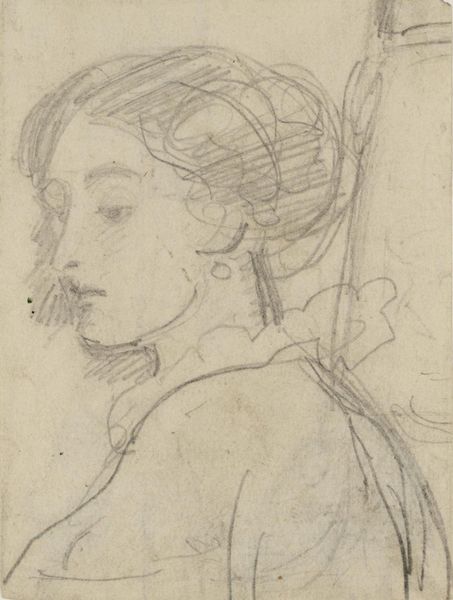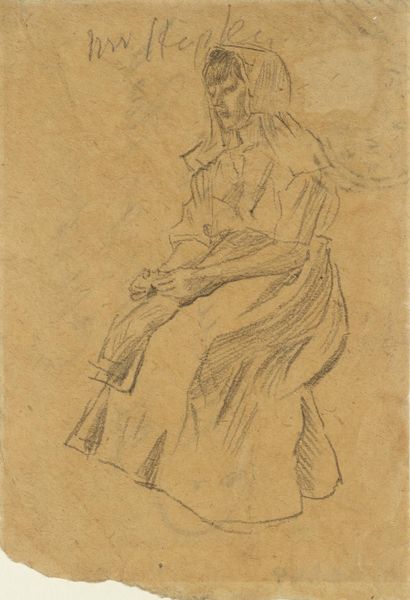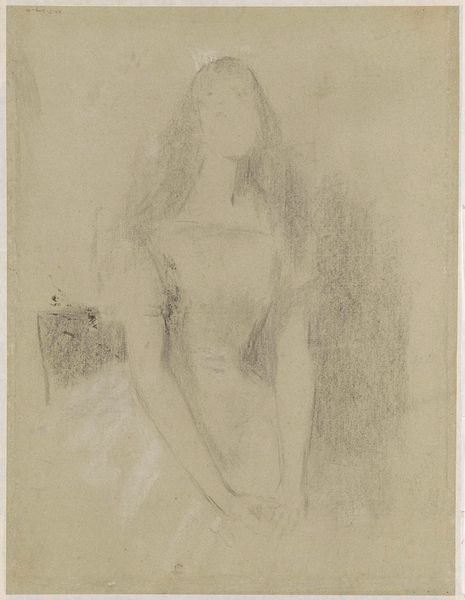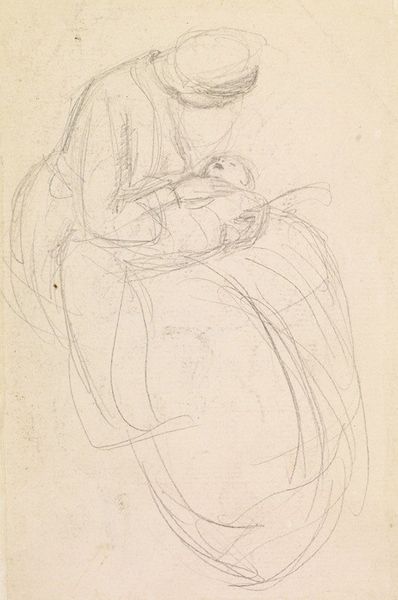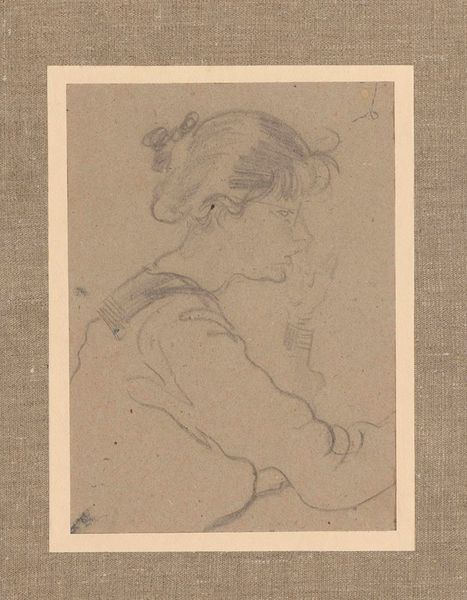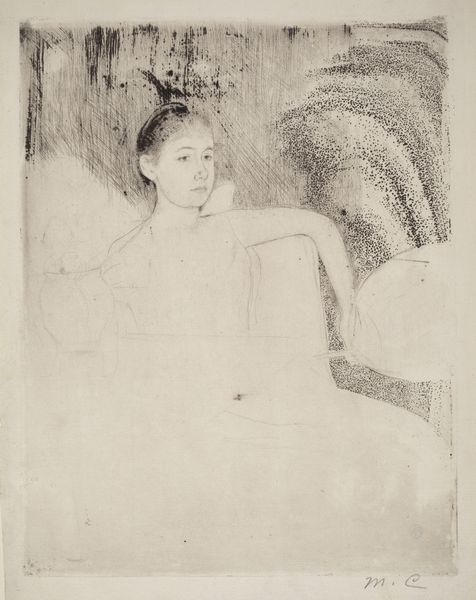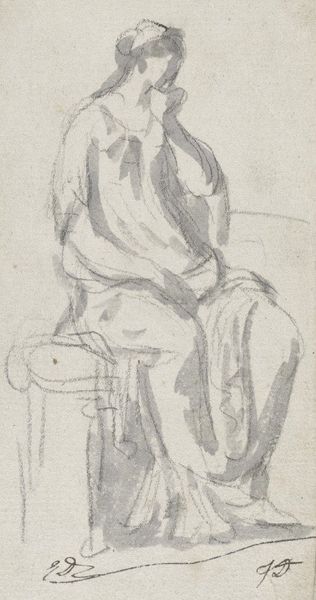
drawing, pencil
#
portrait
#
drawing
#
german-expressionism
#
figuration
#
pencil drawing
#
pencil
#
expressionism
#
portrait drawing
Copyright: Public Domain: Artvee
Curator: Alright, let's delve into Ernst Ludwig Kirchner's "Fränzi vor geschnitztem Stuhl," created around 1910. A simple pencil drawing. Editor: She has a wary gaze, doesn’t she? There’s a vulnerability that makes you want to wrap her in a warm blanket. The starkness of the medium, just pencil on paper, amplifies that sense of… exposed-ness. Curator: Indeed. This work belongs to Kirchner's early Expressionist period, reflecting the anxieties and tensions simmering in pre-war Germany. The model, Fränzi Fehrmann, was a frequent subject and an important figure within the artists’ circles of Dresden. Editor: What's the story with the carved chair? It’s a funny detail – all angular and rigid, contrasting sharply with the soft curves of Fränzi's face and shoulders. Makes you wonder about the furniture choices people make, right? It must be uncomfortable to pose there! Curator: It is interesting that the stark and somewhat crudely carved chair adds another layer of visual tension. Kirchner and his colleagues saw themselves as forging a new, authentic artistic expression rooted in the 'primitive'. They rejected the perceived decadence and conformity of Wilhelmine society. Editor: It totally works, I find! She looks simultaneously childlike and deeply wise, perched there in that austere space. Also the overall lack of any color palette and the use of bare essentials brings the drawing together by inviting viewers into the raw emotions, rather than surface beauty, of that subject matter. Curator: You raise a pertinent point about the bare essentials! Pencil allowed Kirchner immediacy in capturing fleeting moments and conveying inner emotional states, key traits of the Expressionist aesthetic. Editor: I am surprised by how simple tools have been used in here. Despite it's minimalist aesthetic quality it is packed with so much complexity! Curator: Precisely! The raw immediacy helps reveal Fränzi Fehrmann not just as a subject, but also a symbol of youth grappling with complex social changes that came at the time. Editor: It is striking to look back in time through such a transparent and expressive portrait as we discuss this piece and to see its raw expressiveness so well displayed. Curator: Concur, its impact is still resonant nowadays!
Comments
No comments
Be the first to comment and join the conversation on the ultimate creative platform.
